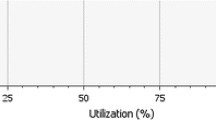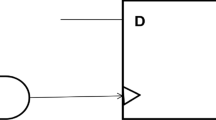Abstract
There are many areas of communication and network, which have open scope to use FIR filter. Therefore, energy efficient FIR filter will increase lifetime of network and FIR filter with less delay and latency will increase performance of network. In this work, we are going to design an FIR filter that will energy efficient as well as faster than traditional design. Three different FPGA and SOC are taken under consideration and our design is implemented on these four ICs and we find the most energy efficient architecture and also find the architecture that will deliver highest performance among these four architectures taken under consideration. There is 47.74% reduction in latency when we migrate our FIR Filter design from 28 nm process technology based seven series architecture to 20 nm process technology based ultrascale architecture. When we analyze power dissipation of Artix-7, Kintex-7, Zynq and Ultrascale FPGA then we conclude that Zynq 7000 All programmable SOC is power hungry architecture and Kintex ultrascale architecture is the most energy efficient architecture that dissipates 20.86% less power than Zynq 700 All programmable SOC. For performance evaluation, we have taken benchmark C code of FIR provide by Xilinx. We transform that C code into HDL using Vivado HLS 2016.2 before power analysis on Vivado 2016.2. Ultrascale FPGA is generally used for packet processing in 100G networking and heterogeneous wireless infrastructure.











Similar content being viewed by others
References
Series FPGA Overviews. http://www.xilinx.com/support/documentation/data_sheets/ds180_7Series_Overview.pdf.
Zynq 7000 All programmable SOC. http://www.xilinx.com/products/silicon-devices/soc/zynq-7000.html.
Kintex UltraScale FPGAs. http://www.xilinx.com/products/silicon-devices/fpga/kintex-ultrascale.html.
Rezaee, A. (2015). Using coevolutionary genetic algorithms for estimation of blind fir channel. Wireless Personal Communications, 83(1), 191–201.
Kannan, G., Garg, M., Merchant, S. N., et al. (2008). MPOE based prefiltering and MRT beamforming with matched filter receiver for DS-CDMA systems. Wireless Personal Communications, 46, 199. doi:10.1007/s11277-007-9417-6.
Mosavi, M. R., Moghaddasi, M. S., & Rezaei, M. J. (2016). A new method for continuous wave interference mitigation in single-frequency GPS receivers. Wireless Personal Communications,. doi:10.1007/s11277-016-3410-x.
Martone, M. (2000). A blind adaptive QR-based lattice multi-channel filter for cellular base-station TDMA transceivers with antenna arrays. Wireless Personal Communications, 12, 149. doi:10.1023/A:1008838213239.
Bhat, D., Kaur, A., & Singh, S. (2015). Wireless sensor network specific low power FIR filter design and implementation on FPGA. In Computing for sustainable global development (INDIACom), 2015 2nd international conference on (pp. 1534–1536). IEEE.
Kang, A. S., & Sharma, V. (2015). Analysis of simulation parameters of pulse shaping FIR filter for WCDMA. International Journal of Advancements in Technology, 1(1), 117–130.
FIR Benchmark Code. http://www.xilinx.com/support/documentation/sw_manuals/xilinx2014_2/ug871-vivado-high-level-synthesis-tutorial.pdf.
Kumar, T., et al. (2015). CTHS based energy efficient thermal aware image ALU design on FPGA. Wireless Personal Communications, 83(1), 671–696. doi:10.1007/s11277-015-2801-8.
Musavi, S. H. A. (2015). IoTs enable active contour modeling based energy efficient and thermal aware object tracking on FPGA. Wireless Personal Communications, 85(2), 529–543.
Kumar, T., et al. (2014). Mobile DDR IO standard based high performance energy efficient portable ALU design on FPGA. Wireless Personal Communications, An International Journal, 76(3), 569–578.
Abdullah, M. F. L., et al. (2015). Energy-efficient pseudo noise generator based optical transmitter for ethernet (IEEE 802.3az). In IEEE/Scopus international conference on computer, communication, and control technology (I4CT’15), Kuching.
Kumar, T., et al. (2014). IO standard based thermal/energy efficient green communication for Wi-Fi protected access on FPGA. In 6th IEEE international congress on ultra-modern telecommunications and control systems and workshops (ICUMT), St. Petersburg.
Author information
Authors and Affiliations
Corresponding author
Rights and permissions
About this article
Cite this article
Pandey, B., Das, B., Kaur, A. et al. Performance Evaluation of FIR Filter After Implementation on Different FPGA and SOC and Its Utilization in Communication and Network. Wireless Pers Commun 95, 375–389 (2017). https://doi.org/10.1007/s11277-016-3898-0
Published:
Issue Date:
DOI: https://doi.org/10.1007/s11277-016-3898-0




